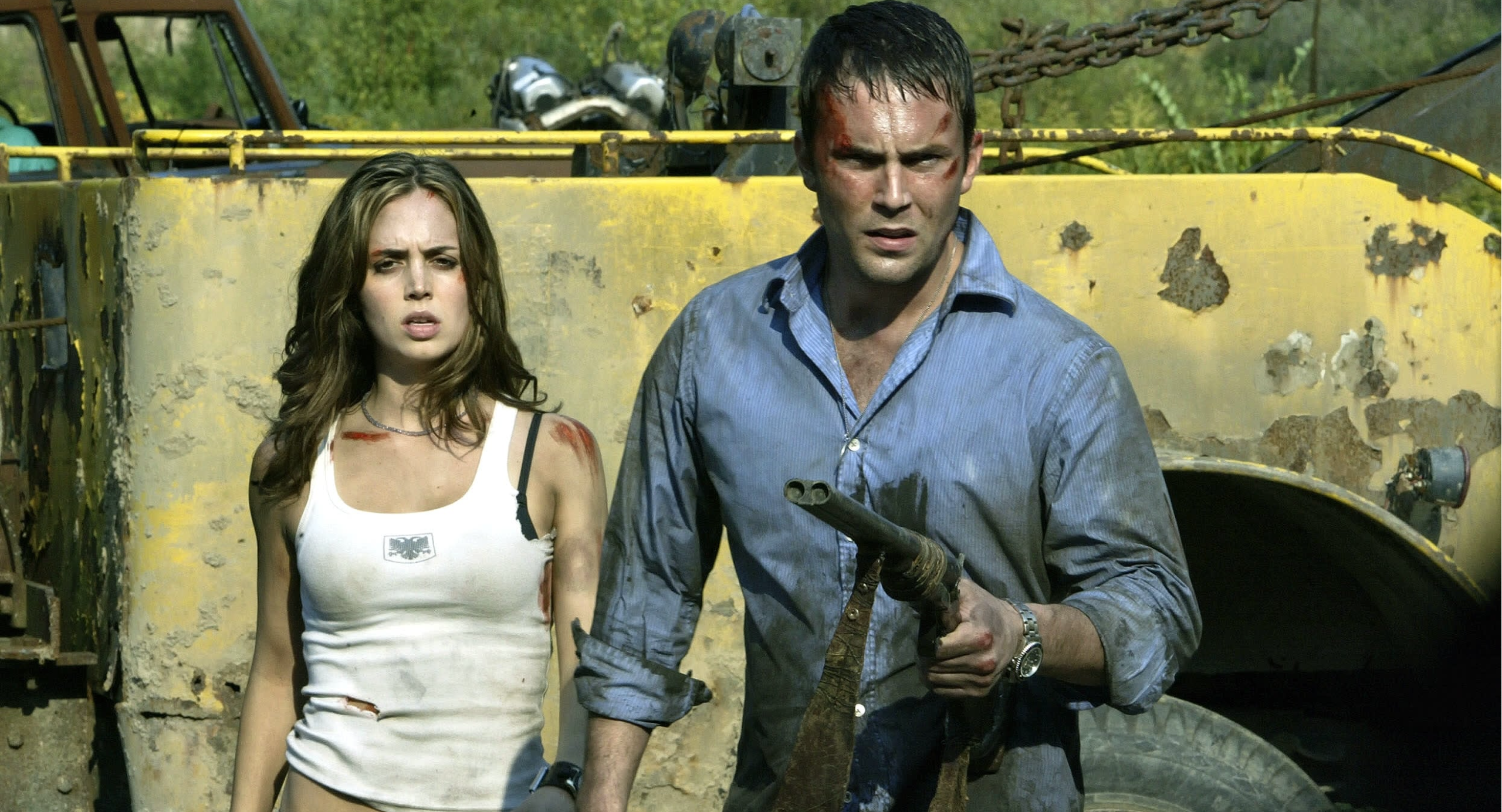Wrong Turn – Film Review
Published April 8, 2024

Directed by Rob Schmidt and released in 2003, Wrong Turn straddles the line between gruesome horror and formulaic slasher clichés, offering an experience that, while sometimes thrilling, often treads too familiar territory to truly stand out. The film centers around a group of young people who, after a series of unfortunate decisions and accidents, find themselves lost in the remote woods of West Virginia. They soon discover that they are not alone, becoming the targets of a family of cannibalistic mountain men horribly disfigured through generations of inbreeding. As the group fights for survival, Wrong Turn does not shy away from blood and gore, yet its reliance on genre staples leaves the overall impression somewhat diluted in originality.
The ensemble cast features Desmond Harrington as Chris Flynn, who inadvertently joins a group of stranded friends including Eliza Dushku‘s Jessie Burlingame, Jeremy Sisto‘s Scott, and Emmanuelle Chriqui‘s Carly. While performances are generally competent, the film does little to flesh out its characters beyond basic archetypes. Harrington’s portrayal of Chris offers a somewhat charismatic lead, but the script restricts him to the typical role of an outsider with a mysterious past. Dushku’s Jessie, meant to be the strong, resourceful heroine, falls victim to predictable horror tropes that limit her impact. The rest of the cast serves their purpose but doesn’t transcend the conventional roles dictated by the genre.
Visually, Wrong Turn excels with its eerie, densely forested setting that creates a claustrophobic atmosphere ripe for tension. The film’s cinematography successfully exploits the natural landscape to enhance the sense of isolation and dread. The production design’s attention to detail, especially in the grotesque lair of the cannibal family, adds a layer of visceral horror that is among the film’s highlights. Additionally, the practical makeup effects used to realize the appearance of the cannibals are commendable for their ability to disturb and horrify, lending credibility to these monstrous antagonists.
Director Rob Schmidt demonstrates skill in crafting suspenseful sequences, with several standout moments that utilize the environment and sound design effectively. However, Wrong Turn sometimes falters in its pacing, interspersing adrenaline-fueled chases with lulls that drain the narrative momentum. This uneven pacing, combined with the predictable sequence of scares, prevents the film from sustaining a consistent level of tension throughout its runtime.
One of the main criticisms of Wrong Turn is its over-reliance on genre clichés without offering sufficient innovation. The premise of city folks stumbling upon deadly rural dangers is a well-worn path, and the film does little to subvert expectations or explore its premise in new ways. The antagonists, while visually horrifying, are not given enough depth to transcend the stereotype of backwoods villains, reducing them to mere obstacles in the protagonists’ quest for survival. This lack of originality and depth in character development and story means Wrong Turn struggles to distinguish itself within the crowded horror genre.
That said, the film is not without its merits for fans of straightforward slasher flicks. The action is gritty, and the gore is plentiful, catering to viewers seeking a visceral thrill. The makeup and practical effects deserve praise for their ability to elicit disgust and terror, a testament to the talents involved behind the scenes. Moreover, the setting in the Appalachian wilderness is effectively utilized, adding a layer of authenticity and immersion to the proceedings.
The narrative, while straightforward and lacking in depth, is tightly woven, ensuring that the film moves at a brisk pace (albeit with some aforementioned pacing issues). This focus on action over exposition may alienate viewers seeking a more cerebral horror experience but will satisfy those in search of straightforward horror entertainment. The film also succeeds in establishing a menacing tone from the outset, ensuring that the audience is aware that danger lurks behind every tree.
Wrong Turn shines in its technical aspects, particularly the makeup, effects, and setting, which together create a compelling atmosphere of dread. However, the film’s adherence to tried-and-tested horror tropes without introducing significant innovations or depth results in a viewing experience that feels overly familiar. Its performances are competent but hampered by a lack of character development, and while it delivers on the promise of gore and suspense, it does little to engage the viewer beyond the surface level. For fans of the genre, Wrong Turn offers enough thrills and chills to be worth a watch but ultimately does not carve out a unique place for itself in the horror pantheon. It’s a journey down a path we’ve all been down before, providing occasional jumps and frights but leaving us longing for a route that takes us somewhere we haven’t seen a thousand times before.
